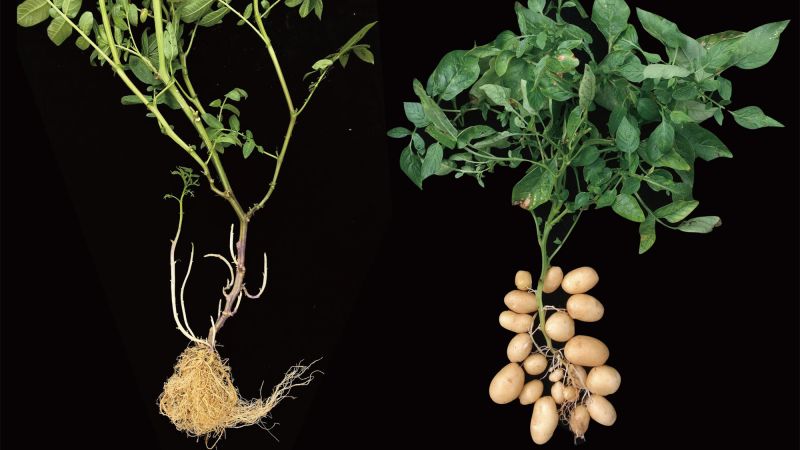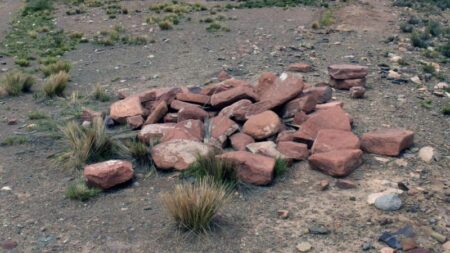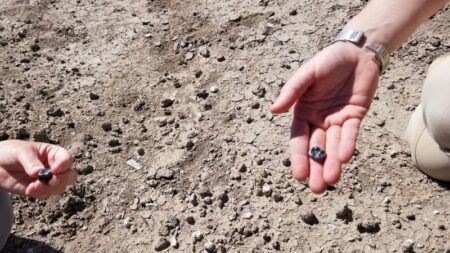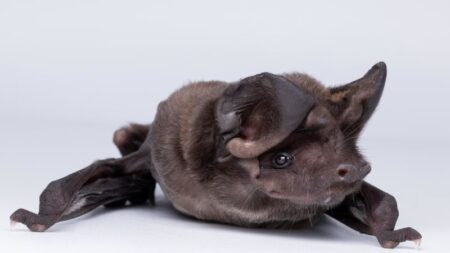The potato, a fundamental component of the global diet and the third most important staple crop responsible for 80% of human caloric intake, has a storied lineage that dates back approximately 10,000 years. Originally cultivated in the Andes mountains, its history was obscured by the limitations of plant preservation in the fossil record. Recently, however, a team composed of evolutionary biologists and genomic scientists has initiated a deeper exploration into the potato’s origins, uncovering intriguing connections that link it to an unexpected relative—the tomato.
This research is grounded in the analysis of 450 genomes from both cultivated and wild potato species. The findings reveal a remarkable instance of hybridization: an ancient wild tomato ancestor interbred with a potato-like plant known as Etuberosum around 9 million years ago, after both diverged from a shared ancestor roughly 14 million years prior. This process, delineated in a study published in the journal Cell, proposes that even though neither the tomato nor Etuberosum could grow tubers, their hybrid progeny developed the ability to do so. The evolution of tubers was a critical adaptation, allowing the potato to store nutrients underground as climatic conditions in the Andes became harsher, leading to the potato’s ascendance as a dietary staple.
Sanwen Huang, coauthor of the study and president of the Chinese Academy of Tropical Agricultural Sciences, emphasized the evolutionary advantage conferred by tuber development in challenging environments. He noted, “Evolving a tuber gave potatoes a huge advantage in harsh environments, fueling an explosion of new species.” This adaptation not only contributed to the survival of the potato but also enhanced genetic diversity among species, ultimately contributing to the wide variety we encounter today.
The research team further investigated the specific genes contributed by each ancestor to the formation of tubers, laying groundwork for future endeavors in breeding more resilient potato varieties, particularly in the face of climate change and disease threats. Potatoes, tomatoes, and Etuberosums all belong to the genus Solanum, which comprises around 1,500 species. Importantly, the resemblance between potatoes and Etuberosum plants initially led researchers to assume they shared a closer evolutionary relationship, only to discover through phylogenetic analyses that potatoes are genetically more aligned with tomatoes.
Dr. Sandy Knapp, research botanist at the Natural History Museum in London, highlighted the rarity of Etuberosum plants, stating that they remain largely isolated to specific locales like the Juan Fernández Islands and certain rainforests in Chile. The discovery of the connections among these plants provides another layer of complexity to the potato’s origin, revealing that they are products of both historical ecological interactions and genetic mixing.
The methodology involved in this research was exhaustive; researchers compiled a genetic database that not only included museum specimens but also rare wild potatoes from the Andes. This comprehensive dataset, described by Zhiyang Zhang from the Agricultural Genomics Institute, represents a significant leap in the understanding of potato genomics.
As the team unraveled the potato’s genetic background, they hypothesized that climatic changes may have facilitated the cohabitation of ancient ancestors of Etuberosum and tomatoes, leading to the interbreeding event that produced the first potato. The genetic contributions from each parent plant were found to be pivotal: the tomato provided a key gene, SP6A, that triggered tuber production, while the Etuberosum supplied another, IT1, essential for the underground stem development.
Dr. Tiina Särkinen of the Royal Botanic Garden Edinburgh further described this hybridization as a “romantic” encounter, pointing to the complex stories behind many plant species’ origins. The intricate interweavings of genetic traits and environmental adaptations underscore how the cultivated potato we know today is not just a simple agricultural product but rather a species born from serendipity and genetic diversity.
In light of modern agricultural pressures—from climate change to pest invasions—understanding the potato’s evolutionary history offers vital insights into how we might breed varieties that are not only resilient but also ecologically viable. Seed potatoes possess greater genetic variability, which is crucial for climate adaptation and disease resistance, contrasting with traditionally cultivated methods that reproduce potatoes vegetatively.
In conclusion, the potato’s intriguing lineage, shaped by evolutionary events millions of years ago, reveals interconnectedness among plant species and provides a framework for future agricultural innovation. Researchers hope that by leveraging this knowledge, they can create new potato varieties capable of thriving in a rapidly changing world.












